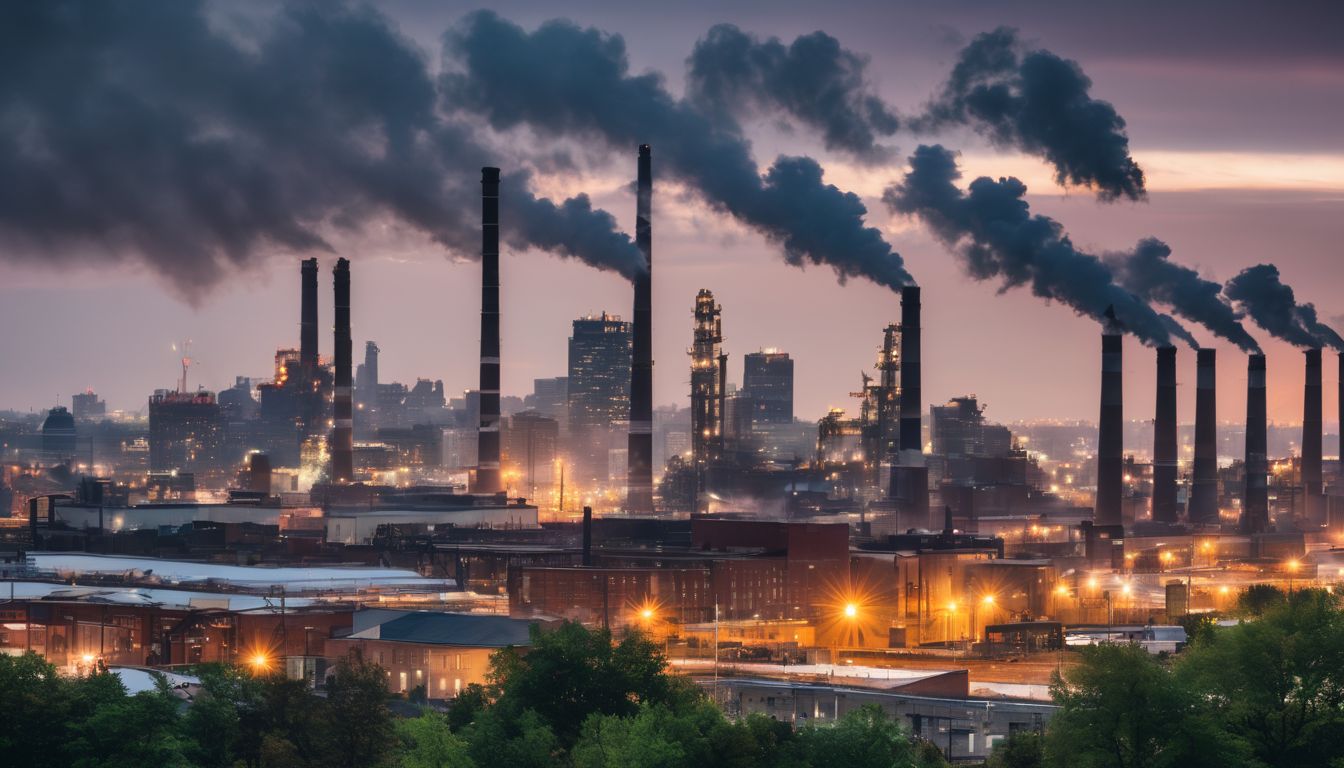Climate change is making weather unpredictable and extreme. Around the world, people are struggling to adapt to these changes. Our article explores the challenges we face in adjusting our lives to cope with a warmer planet.
Keep reading to find solutions together!
Key Takeaways
- Climate adaptation is adjusting to environmental changes to lessen vulnerability and boost resilience, vital for protecting lives and ecosystems.
- Understanding vulnerability is key; it varies by region due to factors like poverty and access to resources, affecting how communities can respond to climate change.
- Multilevel coordination across government, organisations, and communities maximises resources for effective climate change strategies.
- Integrating the potential effects of climate change into policy – making leads to sustainable solutions that increase resilience against environmental changes.
- Effective leadership is crucial in mobilising action against the challenges of climate adaptation, highlighting the need for proactive steps towards sustainability.
Understanding Climate Adaptation
Climate adaptation refers to the process of adjusting to changing environmental conditions in order to reduce vulnerability and build resilience. It is crucial in mitigating the impacts of climate change on communities, ecosystems, and economies.
Definition of adaptation
Adaptation in environmental terms is the process by which individuals, communities and countries seek to cope with the consequences of climate change. Species and ecosystems naturally adapt to changing conditions over time, but human-induced climate change is happening so rapidly that natural processes can’t keep up.
To counter this, adaptive strategies are designed to enhance resilience against extreme weather events such as floods, droughts and heatwaves.
These adaptations can range from constructing flood defences, altering farming practices to suit different weather patterns, through to implementing policies that reduce greenhouse gas emissions.
Each measure aims at reducing vulnerability and building greater capacity within societies to handle the effects of global warming. Effective adaptation requires identifying risks promptly and responding with appropriate measures that will minimise both immediate dangers and future impacts on our environment.
Importance of adaptation in the face of climate change
Adaptation plays a crucial role in addressing the challenges posed by climate change. As the Earth’s climate continues to evolve, it is essential for communities and ecosystems to enhance their adaptive capacity.
This involves building resilience, implementing effective strategies, and integrating climate change impacts into decision-making processes. Vulnerability to climate change can be reduced through proactive adaptation measures that focus on both individual and collective actions.
Climate adaptation is vital for safeguarding lives, livelihoods, infrastructure, and natural resources from the adverse effects of climate change. It also presents an opportunity to promote sustainable development while minimising environmental degradation.
Vulnerability as a key concept
Understanding vulnerability is crucial when discussing climate change adaptation. Vulnerability refers to the susceptibility of communities, ecosystems, and economies to the impacts of climate change.
It encompasses a range of factors such as exposure to environmental risks, sensitivity to those risks, and the capacity to adapt. Vulnerability varies across different regions and social groups due to unequal access to resources, technology, and information.
Vulnerability also depends on socioeconomic factors like poverty levels, education, health care access, and housing conditions. Additionally, it involves understanding how certain groups within society are disproportionately affected by climate change impacts.
Dimensions of Climate Adaptation
Climate adaptation involves various dimensions such as physical, social, economic, and ecological aspects. Each dimension presents unique challenges and requires tailored strategies for effective adaptation to climate change impacts.
Physical, social, economic, and ecological dimensions
Climate adaptation entails addressing various dimensions crucial to resilience against climate change effects. These include:
- Physical dimension: Building resilient infrastructure, such as flood barriers and drought-resistant agricultural systems.
- Social dimension: Enhancing community preparedness and awareness through education, training, and early warning systems.
- Economic dimension: Developing sustainable businesses and livelihoods that reduce reliance on activities contributing to climate change.
- Ecological dimension: Protecting and restoring natural habitats, biodiversity, and ecosystems that provide vital services for climate resilience.
Challenges to Climate Adaptation
Decision-making is often hindered by barriers such as conflicting interests and values. Additionally, limitations in resources and information can impede effective climate adaptation efforts.
Barriers to decision-making
Decision-making in climate adaptation is hindered by various barriers. Limited financial resources often restrict the implementation of effective strategies to address climate change risks.
Additionally, inadequate information and data impede informed decision-making processes, hampering efforts to enhance environmental sustainability and resilience.
Lack of leadership further exacerbates the challenges faced in making critical decisions related to climate change adaptation. The absence of strong guidance can result in disjointed approaches, hindering the cohesive actions needed to mitigate climate change impacts effectively.
Limitations in resources and information
Transitioning from barriers to decision-making, the limitations in resources and information pose significant challenges to effective climate change adaptation. Insufficient funding hinders the implementation of adaptation measures, and a lack of accurate data complicates informed decision-making.
This shortage of resources and information impacts the ability to develop and implement sustainable strategies for climate resilience.
Furthermore, limited access to scientific research on climate change impacts inhibits the development of comprehensive adaptation policies. Without adequate insight into current and projected environmental changes, it becomes increasingly difficult to formulate effective solutions.
Lack of leadership
The lack of leadership hinders effective climate change adaptation. Leaders at all levels, from local to global, play a crucial role in driving and implementing necessary policies and actions.
Without strong leadership, it becomes challenging to mobilise resources, coordinate efforts, and address the complex challenges presented by climate change.
Leadership is vital in championing sustainable practices and influencing decision-making processes that can shape resilient communities and ecosystems. When leaders fail to prioritise climate adaptation, it undermines the urgency needed to mitigate the impacts of climate change effectively.
This highlights the need for visionary leaders who are committed to taking proactive steps towards building a more sustainable future for all.
Opportunities for Climate Adaptation
Multilevel coordination between governments, communities, and organisations provides the opportunity to develop comprehensive climate adaptation strategies. Integrating climate change impacts into decision-making processes can also improve the effectiveness of adaptation efforts.
Multilevel coordination
Multilevel coordination involves collaboration between different levels of government, organisations, and communities to address the challenges of climate change adaptation. It requires aligning policies, sharing information, and coordinating actions across local, regional, national, and international levels.
By integrating efforts and expertise at various scales, multilevel coordination maximises resources and enhances the effectiveness of climate adaptation strategies. This approach ensures a cohesive response to the complex and interconnected impacts of climate change across different geographical areas.
Moving forward from multilevel coordination, let’s delve into how integration of climate change impacts into decision-making further strengthens our ability to adapt in the face of environmental changes.
Integration of climate change impacts into decision-making
To effectively address the challenges of climate change, it is crucial to integrate its impacts into decision-making processes. This involves considering the potential effects of climate change when making decisions related to policies, infrastructure development, and resource allocation.
By incorporating climate change impacts into decision-making, it becomes possible to develop more resilient and sustainable solutions that can mitigate the adverse effects of environmental changes on communities and ecosystems.
Considering climate change impacts in decision-making enables policymakers and stakeholders to proactively identify vulnerabilities and prioritise actions that enhance adaptation and resilience.
Conclusion
In conclusion, addressing climate change adaptation challenges requires coordinated action. Decision-makers must integrate climate impacts into planning and resource allocation. Leadership is essential to drive multilevel coordination for effective environmental adaptation solutions.
Overcoming these obstacles will pave the way for a resilient future in the face of ongoing climate change.
FAQs
1. What are the main challenges of adapting to climate change?
The main challenges include strengthening climate change resilience, reducing carbon footprints through mitigation efforts, and updating policies for environmental adaptation.
2. How can countries build climate change resilience?
Countries can enhance their climate change resilience by investing in renewable energy sources and creating robust strategies to protect against sea level rise and extreme weather events.
3. Why is it important to focus on both climate change mitigation and adaptation?
It’s crucial because mitigation reduces future risks by cutting emissions whereas adaptation helps us cope with current changes like ecosystem degradation.
4. Can our actions really make a difference in fighting sea level rise?
Absolutely! By lowering our carbon footprint and supporting sustainable practices, we contribute to lessening the impacts of sea level rise and safeguarding vulnerable ecosystems.





